
It powers natural language interactions, content creation, summarization, and more, offering developers a solid balance between performance, cost, and output quality.
- Product Developers: Integrate o1-pro into tools and platforms for fast, context-aware AI capabilities.
- Customer Support Teams: Build bots and virtual agents that understand and resolve customer queries effectively.
- Content Creators: Generate ideas, blog posts, social media content, and long-form articles with ease.
- App Builders: Use o1-pro in mobile or SaaS apps to add dynamic responses and interactive user experiences.
- Students & Educators: Summarize research, explain concepts, or create study material efficiently.
- Marketing Teams: Craft product descriptions, landing page content, and email sequences at scale.
🛠️ How to Use o1-pro?
- Step 1: Sign in to the OpenAI Platform: Access o1-pro through the OpenAI API, using chat or completion endpoints.
- Step 2: Select the o1-pro Model: Choose gpt-4-o1 as your target model from the list of available deployments.
- Step 3: Input a Prompt: Provide the model with a detailed prompt, instruction, or question in natural language.
- Step 4: Configure Output Settings: Adjust parameters like temperature, topp, and maxtokens to control creativity and length.
- Step 5: Receive & Use Output: Use the AI’s generated response in your app, website, or process pipeline.
- Step 6: Scale Up as Needed: With reliable performance and manageable cost, o1-pro is ideal for production workloads.
- High-Speed Generation: Optimized for fast inference times—ideal for real-time applications.
- Reliable Accuracy: Offers coherent, relevant responses across a wide array of domains.
- Production-Ready: Robust enough for live user-facing tools and business workflows.
- Lower Latency: Outperforms older GPT models in speed without sacrificing quality.
- Cost-Effective: Priced more affordably than GPT-4 while offering comparable output in many cases.
- Flexible Integration: Works with OpenAI's Assistants API, JSON mode, and function calling.
- Fast Response Time: Suitable for responsive user experiences and chat-based tools.
- Strong General Knowledge: Performs well across diverse topics and writing styles.
- Better Price-to-Performance Ratio: A great middle-ground between GPT-3.5 and full GPT-4 models.
- Supports JSON & Function Calling: Simplifies data handling and structured integrations.
- Easy to Deploy in Existing Workflows: Fits well in both lightweight and complex applications.
- Limited Transparency: OpenAI has not revealed detailed architecture or training data specifics.
- Not as Capable as GPT-4 Turbo: May struggle with complex reasoning tasks or domain-specific outputs.
- Occasional Repetition or Over-summarization: Especially in longer content.
- No Fine-Tuning (Yet): Developers must rely on prompt engineering instead of model customization.
- Slightly Less Multilingual Versatility: Performs best in English and major global languages.
1M tokens
$150/$600
Proud of the love you're getting? Show off your AI Toolbook reviews—then invite more fans to share the love and build your credibility.
Add an AI Toolbook badge to your site—an easy way to drive followers, showcase updates, and collect reviews. It's like a mini 24/7 billboard for your AI.
Reviews
Rating Distribution
Average score
Popular Mention
FAQs
Similar AI Tools
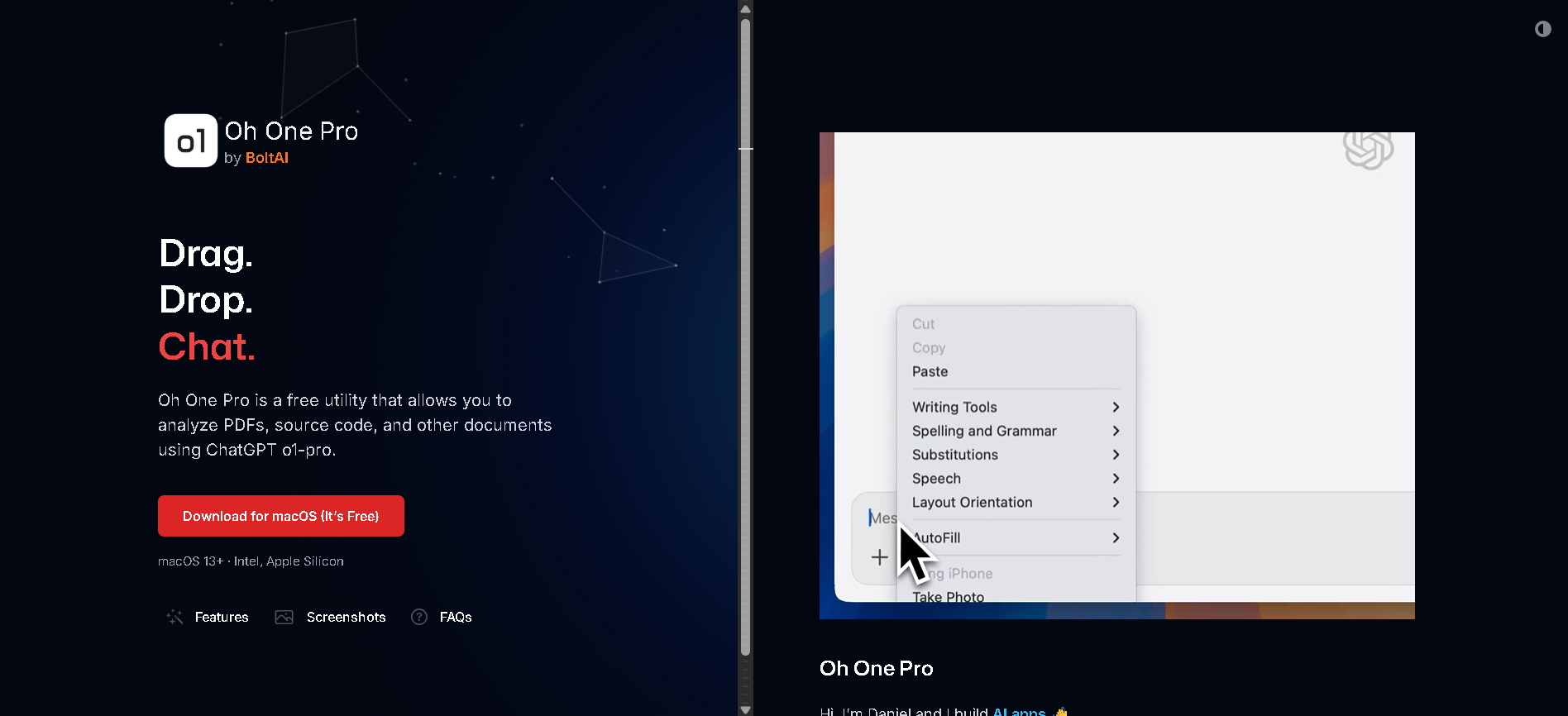

Oh One Pro
Ohonepro.com is the official website for Oh One Pro, a free native Mac utility developed by BoltAI. This application is designed to help users analyze various documents, including PDFs and source code, by making them compatible with OpenAI's powerful ChatGPT o1-pro and o3-mini models. Since these OpenAI models do not natively support direct document uploads, Oh One Pro converts documents into XML format (for text) or images, enabling their analysis by ChatGPT.


Oh One Pro
Ohonepro.com is the official website for Oh One Pro, a free native Mac utility developed by BoltAI. This application is designed to help users analyze various documents, including PDFs and source code, by making them compatible with OpenAI's powerful ChatGPT o1-pro and o3-mini models. Since these OpenAI models do not natively support direct document uploads, Oh One Pro converts documents into XML format (for text) or images, enabling their analysis by ChatGPT.


Oh One Pro
Ohonepro.com is the official website for Oh One Pro, a free native Mac utility developed by BoltAI. This application is designed to help users analyze various documents, including PDFs and source code, by making them compatible with OpenAI's powerful ChatGPT o1-pro and o3-mini models. Since these OpenAI models do not natively support direct document uploads, Oh One Pro converts documents into XML format (for text) or images, enabling their analysis by ChatGPT.

OpenAI’s Real-Time API is a game-changing advancement in AI interaction, enabling developers to build apps that respond instantly—literally in milliseconds—to user inputs. It drastically reduces the response latency of OpenAI’s GPT-4o model to as low as 100 milliseconds, unlocking a whole new world of AI-powered experiences that feel more human, responsive, and conversational in real time. Whether you're building a live voice assistant, a responsive chatbot, or interactive multiplayer tools powered by AI, this API puts real in real-time AI.


OpenAI Realtime AP..
OpenAI’s Real-Time API is a game-changing advancement in AI interaction, enabling developers to build apps that respond instantly—literally in milliseconds—to user inputs. It drastically reduces the response latency of OpenAI’s GPT-4o model to as low as 100 milliseconds, unlocking a whole new world of AI-powered experiences that feel more human, responsive, and conversational in real time. Whether you're building a live voice assistant, a responsive chatbot, or interactive multiplayer tools powered by AI, this API puts real in real-time AI.


OpenAI Realtime AP..
OpenAI’s Real-Time API is a game-changing advancement in AI interaction, enabling developers to build apps that respond instantly—literally in milliseconds—to user inputs. It drastically reduces the response latency of OpenAI’s GPT-4o model to as low as 100 milliseconds, unlocking a whole new world of AI-powered experiences that feel more human, responsive, and conversational in real time. Whether you're building a live voice assistant, a responsive chatbot, or interactive multiplayer tools powered by AI, this API puts real in real-time AI.


OpenAI - GPT 4.1
GPT-4.1 is OpenAI’s newest multimodal large language model, designed to deliver highly capable, efficient, and intelligent performance across a broad range of tasks. It builds on the foundation of GPT-4 and GPT-4 Turbo, offering enhanced reasoning, greater factual accuracy, and smoother integration with tools like code interpreters, retrieval systems, and image understanding. With native support for a 128K token context window, function calling, and robust tool usage, GPT-4.1 brings AI closer to behaving like a reliable, adaptive assistant—ready to work, build, and collaborate across tasks with speed and precision.


OpenAI - GPT 4.1
GPT-4.1 is OpenAI’s newest multimodal large language model, designed to deliver highly capable, efficient, and intelligent performance across a broad range of tasks. It builds on the foundation of GPT-4 and GPT-4 Turbo, offering enhanced reasoning, greater factual accuracy, and smoother integration with tools like code interpreters, retrieval systems, and image understanding. With native support for a 128K token context window, function calling, and robust tool usage, GPT-4.1 brings AI closer to behaving like a reliable, adaptive assistant—ready to work, build, and collaborate across tasks with speed and precision.


OpenAI - GPT 4.1
GPT-4.1 is OpenAI’s newest multimodal large language model, designed to deliver highly capable, efficient, and intelligent performance across a broad range of tasks. It builds on the foundation of GPT-4 and GPT-4 Turbo, offering enhanced reasoning, greater factual accuracy, and smoother integration with tools like code interpreters, retrieval systems, and image understanding. With native support for a 128K token context window, function calling, and robust tool usage, GPT-4.1 brings AI closer to behaving like a reliable, adaptive assistant—ready to work, build, and collaborate across tasks with speed and precision.


OpenAI GPT 4.1 min..
GPT-4.1 Mini is a lightweight version of OpenAI’s advanced GPT-4.1 model, designed for efficiency, speed, and affordability without compromising much on performance. Tailored for developers and teams who need capable AI reasoning and natural language processing in smaller-scale or cost-sensitive applications, GPT-4.1 Mini brings the power of GPT-4.1 into a more accessible form factor. Perfect for chatbots, content suggestions, productivity tools, and streamlined AI experiences, this compact model still delivers impressive accuracy, fast responses, and a reliable understanding of nuanced prompts—all while using fewer resources.


OpenAI GPT 4.1 min..
GPT-4.1 Mini is a lightweight version of OpenAI’s advanced GPT-4.1 model, designed for efficiency, speed, and affordability without compromising much on performance. Tailored for developers and teams who need capable AI reasoning and natural language processing in smaller-scale or cost-sensitive applications, GPT-4.1 Mini brings the power of GPT-4.1 into a more accessible form factor. Perfect for chatbots, content suggestions, productivity tools, and streamlined AI experiences, this compact model still delivers impressive accuracy, fast responses, and a reliable understanding of nuanced prompts—all while using fewer resources.


OpenAI GPT 4.1 min..
GPT-4.1 Mini is a lightweight version of OpenAI’s advanced GPT-4.1 model, designed for efficiency, speed, and affordability without compromising much on performance. Tailored for developers and teams who need capable AI reasoning and natural language processing in smaller-scale or cost-sensitive applications, GPT-4.1 Mini brings the power of GPT-4.1 into a more accessible form factor. Perfect for chatbots, content suggestions, productivity tools, and streamlined AI experiences, this compact model still delivers impressive accuracy, fast responses, and a reliable understanding of nuanced prompts—all while using fewer resources.


OpenAI GPT 4.1 nan..
GPT-4.1 Nano is OpenAI’s smallest and most efficient language model in the GPT-4.1 family, designed to deliver ultra-fast, ultra-cheap, and surprisingly capable natural language responses. Though compact in size, GPT-4.1 Nano handles lightweight NLP tasks with impressive speed and minimal resource consumption, making it perfect for mobile apps, edge computing, and large-scale deployments with cost sensitivity. It’s built for real-time applications and use cases where milliseconds matter, and budgets are tight—yet you still want a taste of OpenAI-grade intelligence.


OpenAI GPT 4.1 nan..
GPT-4.1 Nano is OpenAI’s smallest and most efficient language model in the GPT-4.1 family, designed to deliver ultra-fast, ultra-cheap, and surprisingly capable natural language responses. Though compact in size, GPT-4.1 Nano handles lightweight NLP tasks with impressive speed and minimal resource consumption, making it perfect for mobile apps, edge computing, and large-scale deployments with cost sensitivity. It’s built for real-time applications and use cases where milliseconds matter, and budgets are tight—yet you still want a taste of OpenAI-grade intelligence.


OpenAI GPT 4.1 nan..
GPT-4.1 Nano is OpenAI’s smallest and most efficient language model in the GPT-4.1 family, designed to deliver ultra-fast, ultra-cheap, and surprisingly capable natural language responses. Though compact in size, GPT-4.1 Nano handles lightweight NLP tasks with impressive speed and minimal resource consumption, making it perfect for mobile apps, edge computing, and large-scale deployments with cost sensitivity. It’s built for real-time applications and use cases where milliseconds matter, and budgets are tight—yet you still want a taste of OpenAI-grade intelligence.


OpenAI Codex mini ..
codex-mini-latest is OpenAI’s lightweight, high-speed AI coding model, fine-tuned from the o4-mini architecture. Designed specifically for use with the Codex CLI, it brings ChatGPT-level reasoning directly to your terminal, enabling efficient code generation, debugging, and editing tasks. Despite its compact size, codex-mini-latest delivers impressive performance, making it ideal for developers seeking a fast, cost-effective coding assistant.


OpenAI Codex mini ..
codex-mini-latest is OpenAI’s lightweight, high-speed AI coding model, fine-tuned from the o4-mini architecture. Designed specifically for use with the Codex CLI, it brings ChatGPT-level reasoning directly to your terminal, enabling efficient code generation, debugging, and editing tasks. Despite its compact size, codex-mini-latest delivers impressive performance, making it ideal for developers seeking a fast, cost-effective coding assistant.


OpenAI Codex mini ..
codex-mini-latest is OpenAI’s lightweight, high-speed AI coding model, fine-tuned from the o4-mini architecture. Designed specifically for use with the Codex CLI, it brings ChatGPT-level reasoning directly to your terminal, enabling efficient code generation, debugging, and editing tasks. Despite its compact size, codex-mini-latest delivers impressive performance, making it ideal for developers seeking a fast, cost-effective coding assistant.
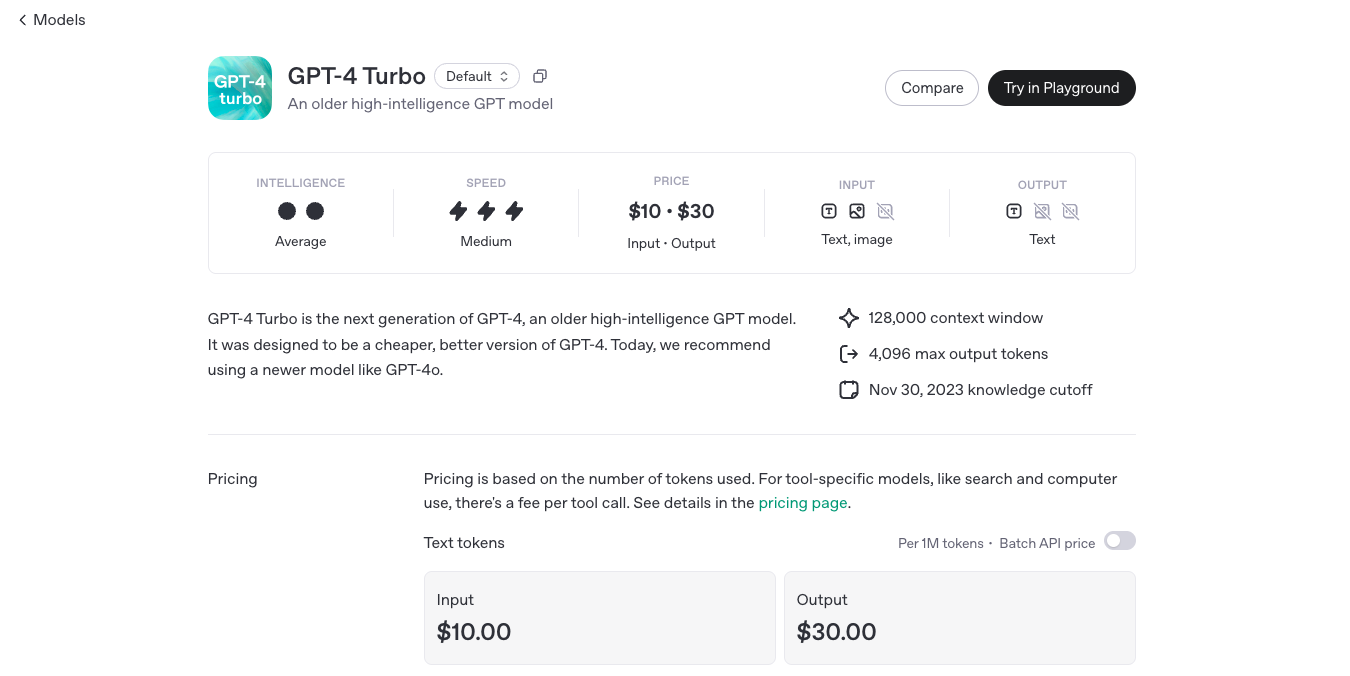

OpenAI GPT 4 Turbo
GPT-4 Turbo is OpenAI’s enhanced version of GPT-4, engineered to deliver faster performance, extended context handling, and more cost-effective usage. Released in November 2023, GPT-4 Turbo boasts a 128,000-token context window, allowing it to process and generate longer and more complex content. It supports multimodal inputs, including text and images, making it versatile for various applications.


OpenAI GPT 4 Turbo
GPT-4 Turbo is OpenAI’s enhanced version of GPT-4, engineered to deliver faster performance, extended context handling, and more cost-effective usage. Released in November 2023, GPT-4 Turbo boasts a 128,000-token context window, allowing it to process and generate longer and more complex content. It supports multimodal inputs, including text and images, making it versatile for various applications.


OpenAI GPT 4 Turbo
GPT-4 Turbo is OpenAI’s enhanced version of GPT-4, engineered to deliver faster performance, extended context handling, and more cost-effective usage. Released in November 2023, GPT-4 Turbo boasts a 128,000-token context window, allowing it to process and generate longer and more complex content. It supports multimodal inputs, including text and images, making it versatile for various applications.
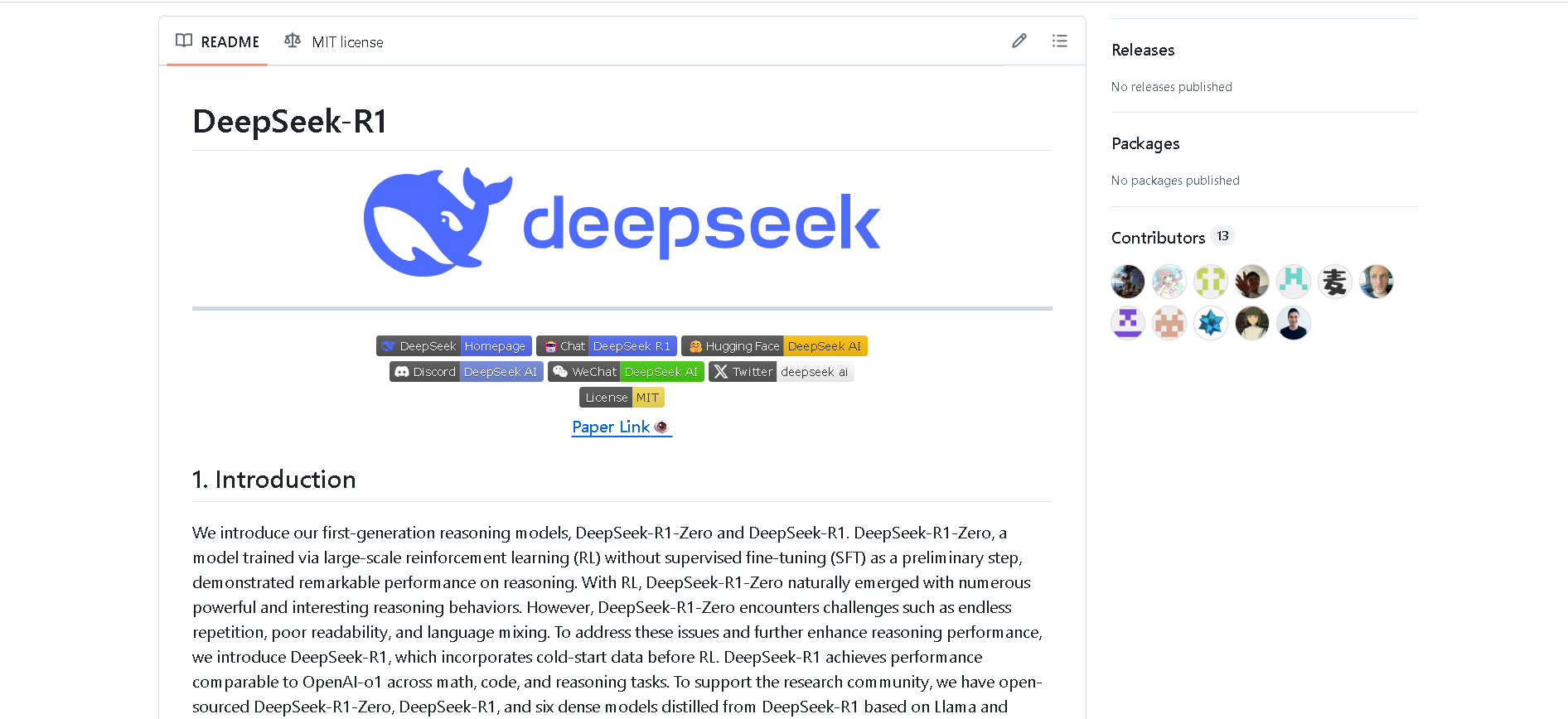

DeepSeek-R1
DeepSeek‑R1 is the flagship reasoning-oriented AI model from Chinese startup DeepSeek. It’s an open-source, mixture-of-experts (MoE) model combining model weights clarity and chain-of-thought reasoning trained primarily through reinforcement learning. R1 delivers top-tier benchmark performance—on par with or surpassing OpenAI o1 in math, coding, and reasoning—while being significantly more cost-efficient.


DeepSeek-R1
DeepSeek‑R1 is the flagship reasoning-oriented AI model from Chinese startup DeepSeek. It’s an open-source, mixture-of-experts (MoE) model combining model weights clarity and chain-of-thought reasoning trained primarily through reinforcement learning. R1 delivers top-tier benchmark performance—on par with or surpassing OpenAI o1 in math, coding, and reasoning—while being significantly more cost-efficient.


DeepSeek-R1
DeepSeek‑R1 is the flagship reasoning-oriented AI model from Chinese startup DeepSeek. It’s an open-source, mixture-of-experts (MoE) model combining model weights clarity and chain-of-thought reasoning trained primarily through reinforcement learning. R1 delivers top-tier benchmark performance—on par with or surpassing OpenAI o1 in math, coding, and reasoning—while being significantly more cost-efficient.
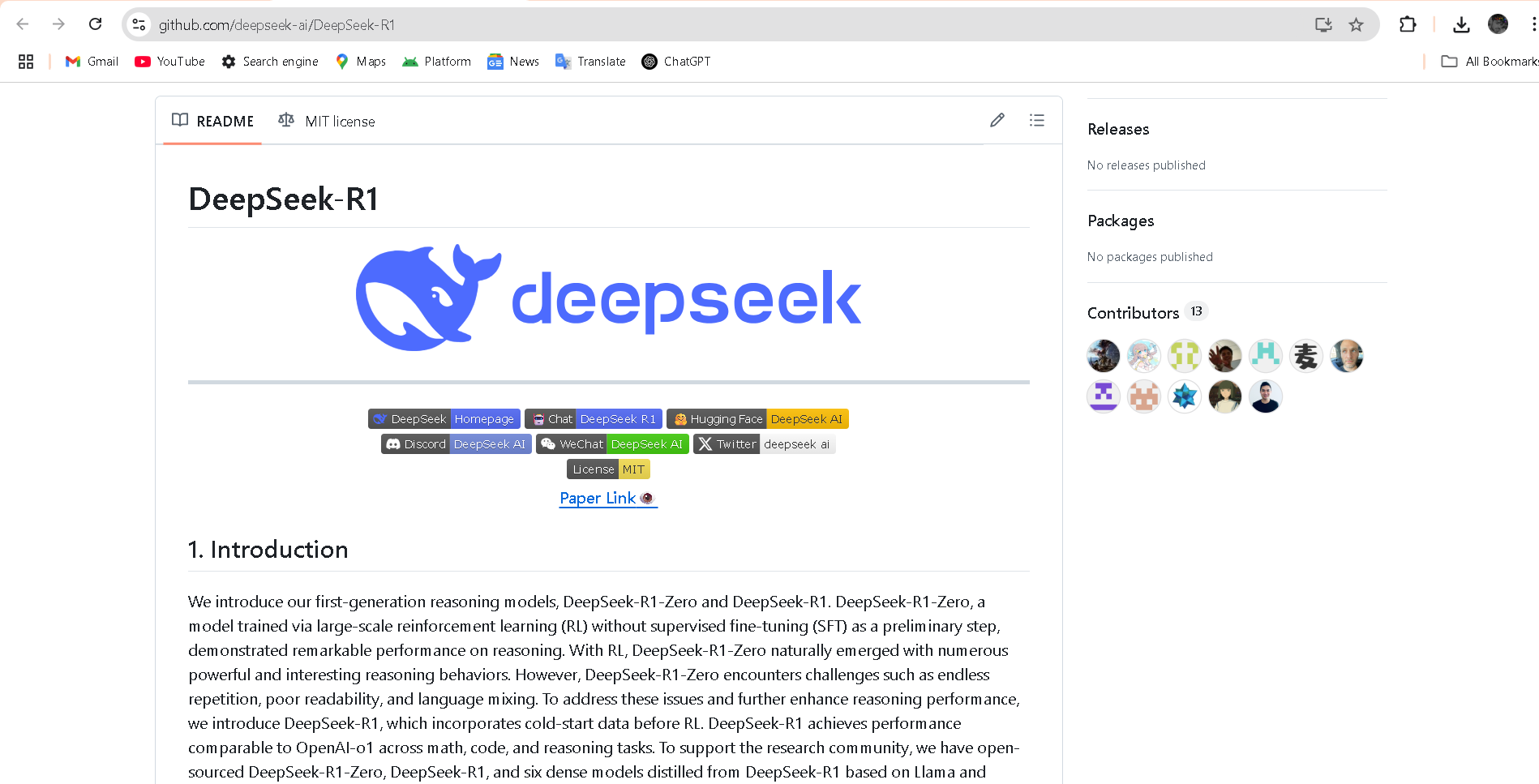

DeepSeek-R1-Distil..
DeepSeek R1 Distill refers to a family of dense, smaller models distilled from DeepSeek’s flagship DeepSeek R1 reasoning model. Released early 2025, these models come in sizes ranging from 1.5B to 70B parameters (e.g., DeepSeek‑R1‑Distill‑Qwen‑32B) and retain powerful reasoning and chain-of-thought abilities in a more efficient architecture. Benchmarks show distilled variants outperform models like OpenAI’s o1‑mini, while remaining open‑source under MIT license.


DeepSeek-R1-Distil..
DeepSeek R1 Distill refers to a family of dense, smaller models distilled from DeepSeek’s flagship DeepSeek R1 reasoning model. Released early 2025, these models come in sizes ranging from 1.5B to 70B parameters (e.g., DeepSeek‑R1‑Distill‑Qwen‑32B) and retain powerful reasoning and chain-of-thought abilities in a more efficient architecture. Benchmarks show distilled variants outperform models like OpenAI’s o1‑mini, while remaining open‑source under MIT license.


DeepSeek-R1-Distil..
DeepSeek R1 Distill refers to a family of dense, smaller models distilled from DeepSeek’s flagship DeepSeek R1 reasoning model. Released early 2025, these models come in sizes ranging from 1.5B to 70B parameters (e.g., DeepSeek‑R1‑Distill‑Qwen‑32B) and retain powerful reasoning and chain-of-thought abilities in a more efficient architecture. Benchmarks show distilled variants outperform models like OpenAI’s o1‑mini, while remaining open‑source under MIT license.
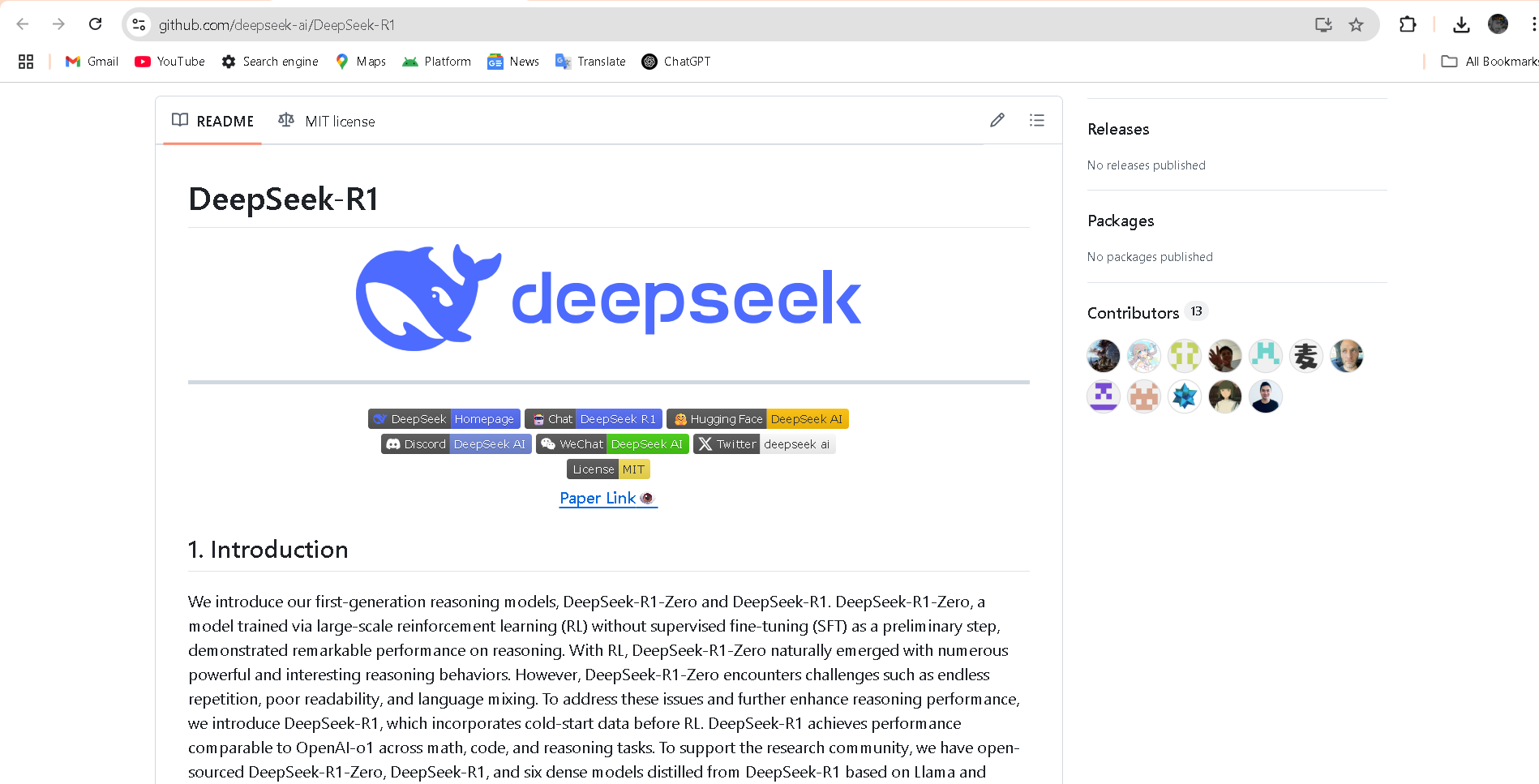

DeepSeek-R1-Distil..
DeepSeek R1 Distill Qwen‑32B is a 32-billion-parameter dense reasoning model released in early 2025. Distilled from the flagship DeepSeek R1 using Qwen 2.5‑32B as a base, it delivers state-of-the-art performance among dense LLMs—outperforming OpenAI’s o1‑mini on benchmarks like AIME, MATH‑500, GPQA Diamond, LiveCodeBench, and CodeForces rating.


DeepSeek-R1-Distil..
DeepSeek R1 Distill Qwen‑32B is a 32-billion-parameter dense reasoning model released in early 2025. Distilled from the flagship DeepSeek R1 using Qwen 2.5‑32B as a base, it delivers state-of-the-art performance among dense LLMs—outperforming OpenAI’s o1‑mini on benchmarks like AIME, MATH‑500, GPQA Diamond, LiveCodeBench, and CodeForces rating.


DeepSeek-R1-Distil..
DeepSeek R1 Distill Qwen‑32B is a 32-billion-parameter dense reasoning model released in early 2025. Distilled from the flagship DeepSeek R1 using Qwen 2.5‑32B as a base, it delivers state-of-the-art performance among dense LLMs—outperforming OpenAI’s o1‑mini on benchmarks like AIME, MATH‑500, GPQA Diamond, LiveCodeBench, and CodeForces rating.
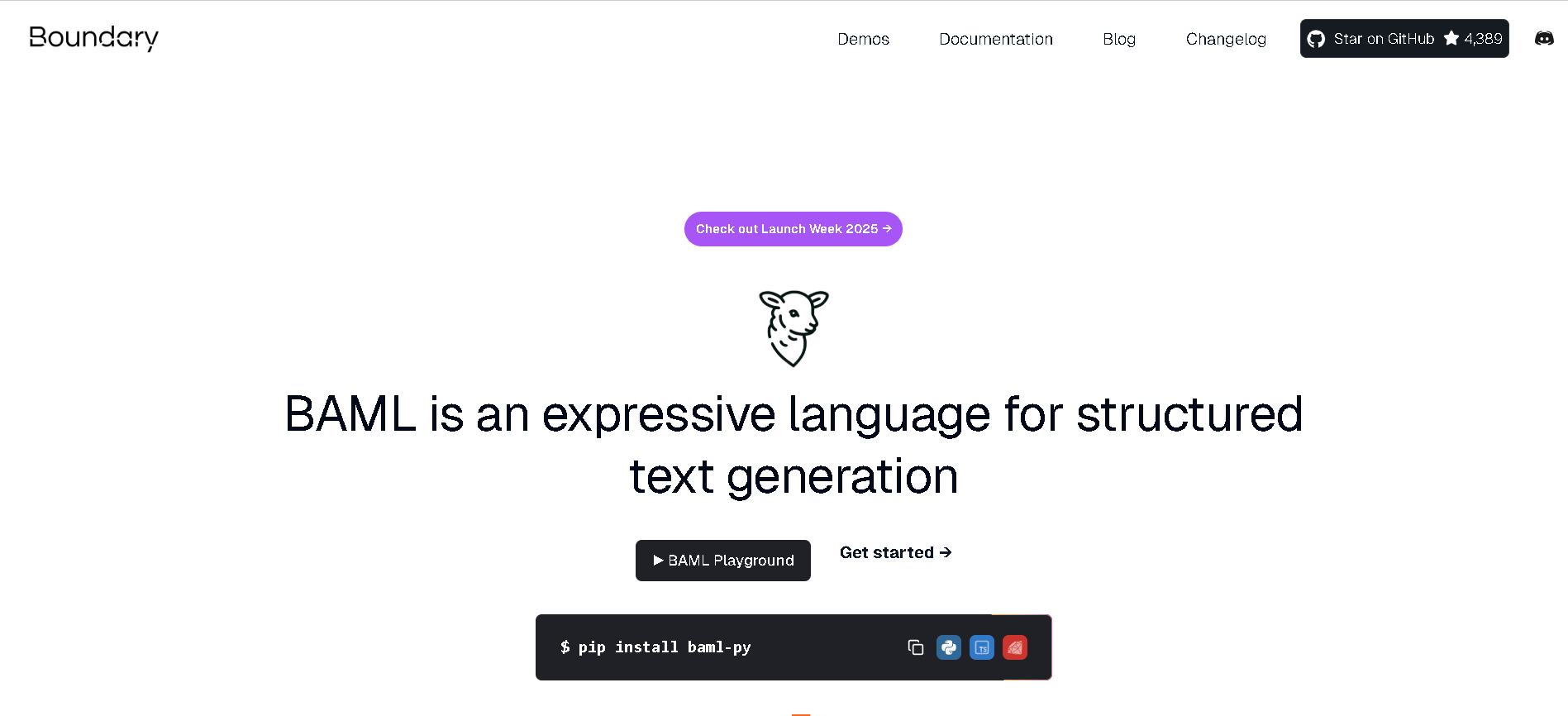
Boundary AI
BoundaryML.com introduces BAML, an expressive language specifically designed for structured text generation with Large Language Models (LLMs). Its primary purpose is to simplify and enhance the process of obtaining structured data (like JSON) from LLMs, moving beyond the challenges of traditional methods by providing robust parsing, error correction, and reliable function-calling capabilities.

Boundary AI
BoundaryML.com introduces BAML, an expressive language specifically designed for structured text generation with Large Language Models (LLMs). Its primary purpose is to simplify and enhance the process of obtaining structured data (like JSON) from LLMs, moving beyond the challenges of traditional methods by providing robust parsing, error correction, and reliable function-calling capabilities.

Boundary AI
BoundaryML.com introduces BAML, an expressive language specifically designed for structured text generation with Large Language Models (LLMs). Its primary purpose is to simplify and enhance the process of obtaining structured data (like JSON) from LLMs, moving beyond the challenges of traditional methods by providing robust parsing, error correction, and reliable function-calling capabilities.
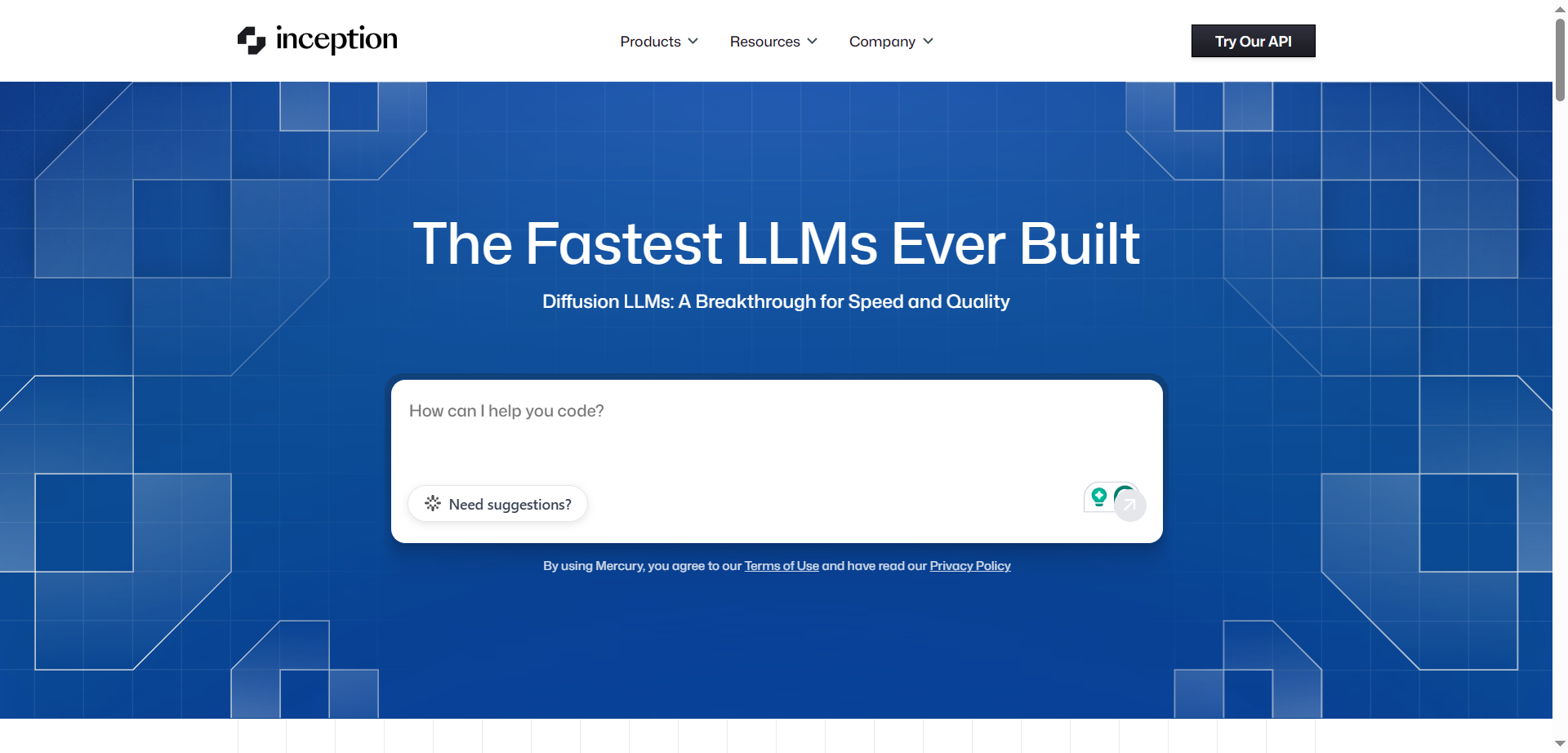

inception
Inception Labs is an AI research company that develops Mercury, the world's first commercial diffusion-based large language models. Unlike traditional autoregressive LLMs that generate tokens sequentially, Mercury models use diffusion architecture to generate text through parallel refinement passes. This breakthrough approach enables ultra-fast inference speeds of over 1,000 tokens per second while maintaining frontier-level quality. The platform offers Mercury for general-purpose tasks and Mercury Coder for development workflows, both featuring streaming capabilities, tool use, structured output, and 128K context windows. These models serve as drop-in replacements for traditional LLMs through OpenAI-compatible APIs and are available across major cloud providers including AWS Bedrock, Azure Foundry, and various AI platforms for enterprise deployment.


inception
Inception Labs is an AI research company that develops Mercury, the world's first commercial diffusion-based large language models. Unlike traditional autoregressive LLMs that generate tokens sequentially, Mercury models use diffusion architecture to generate text through parallel refinement passes. This breakthrough approach enables ultra-fast inference speeds of over 1,000 tokens per second while maintaining frontier-level quality. The platform offers Mercury for general-purpose tasks and Mercury Coder for development workflows, both featuring streaming capabilities, tool use, structured output, and 128K context windows. These models serve as drop-in replacements for traditional LLMs through OpenAI-compatible APIs and are available across major cloud providers including AWS Bedrock, Azure Foundry, and various AI platforms for enterprise deployment.


inception
Inception Labs is an AI research company that develops Mercury, the world's first commercial diffusion-based large language models. Unlike traditional autoregressive LLMs that generate tokens sequentially, Mercury models use diffusion architecture to generate text through parallel refinement passes. This breakthrough approach enables ultra-fast inference speeds of over 1,000 tokens per second while maintaining frontier-level quality. The platform offers Mercury for general-purpose tasks and Mercury Coder for development workflows, both featuring streaming capabilities, tool use, structured output, and 128K context windows. These models serve as drop-in replacements for traditional LLMs through OpenAI-compatible APIs and are available across major cloud providers including AWS Bedrock, Azure Foundry, and various AI platforms for enterprise deployment.
Editorial Note
This page was researched and written by the ATB Editorial Team. Our team researches each AI tool by reviewing its official website, testing features, exploring real use cases, and considering user feedback. Every page is fact-checked and regularly updated to ensure the information stays accurate, neutral, and useful for our readers.
If you have any suggestions or questions, email us at hello@aitoolbook.ai
